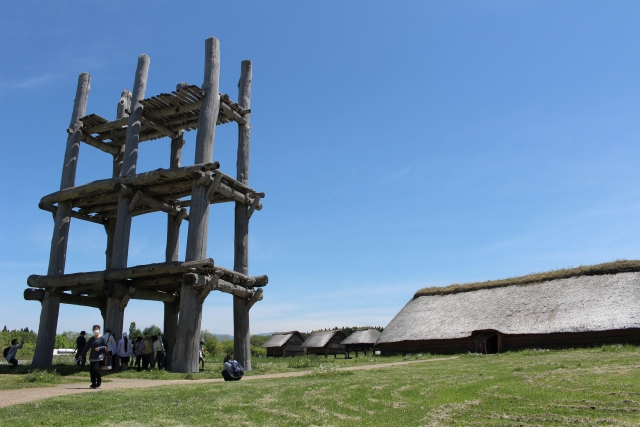About Sannai-Maruyama Site
Sannai-Maruyama Site, a Jomon period village located in the southwestern part of Aomori City, Honshu Island, Japan, are situated on a river terrace about 20 meters above sea level on the right bank of the Okinawa River, and were designated as a National Special Historic Site by the Japanese government in 2000. The Jomon period refers to the period from before 14,000 B.C. to around 300 B.C., which is the late Paleolithic period in Japan.
Since its discovery in 1992, many remains have been discovered, including small cave dwellings, large cave dwellings, tombs, dugout pillar building remains, large dugout pillar building remains, storage caves, road remains, and other remains, covering basically all aspects of small village life, making it the largest Jomon period village site in Japan. The remains of a village from the Jomon period are the largest in Japan. The museum also houses a large collection of local Jomon earthenware, stone tools, dolls, earthen stone ornaments, bone and horn tools, and jade and obsidian artifacts brought from other regions.

How to get there
From Tohoku Expressway Aomori IC, via R7 Loop Bypass, 5 min. toward Sannai-Maruyama Ruins.
Tips
After visiting the Tachineputa no Yakata in Goshogawara City, I moved here. I later realized that there was a Shakugi Dogu (clay figurine) at Kizo Station on the Ono Line, only 5 or 6 km west of the Tachineputa no Yakata no Yakata. I regretted it. The Sannai-Maruyama Site is also a World Heritage Site. After entering the site, we first stopped by the Jomon Jiyuukan (Jomon Museum). There, we were able to learn more about the Sannai-Maruyama Ruins.
What I learned there made me wonder how such a civilization could have developed so well and how such a large settlement could have existed for so long in the Tohoku region, where winters are supposed to be cold, even though it was the Jomon period. The many mysteries of the rise and fall of the people also made me feel romantic. There were so many exhibits. It was a waste of time, but I didn’t have much time, so I had to take a quick tour.
I liked the fact that the exhibits were designed so that even elementary school children could learn in an easy-to-understand way. Next, we went outside to see the restored outdoor dwellings. Among them, the six-pillar structure shown in the photo was particularly interesting. I felt firsthand the advanced civilization of prehistoric times. The admission fee to the Sannai-Maruyama site was very reasonable. The Jomon Jiyuukan is a large U-shaped structure, and there are several convenient restrooms (especially the one at the end of the permanent exhibition was empty).
Website
https://sannaimaruyama.pref.aomori.jp/